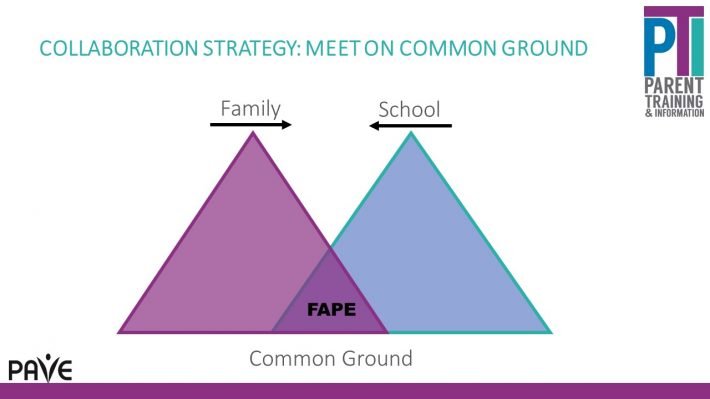A Brief Overview
- Early intervention services help infants and toddlers with disabilities or delays to learn and catch up in their development. This article covers some basics about services for young children in Washington State.
- Families concerned about a child’s development can call the Family Health Hotline at 1-800-322-2588, with support in multiple languages. Parents can complete a developmental screening online for free at Parent Help 123.
- Early Learning and Development Guidelines are downloadable from the Office of Superintendent of Public Instruction. Hard copies can be purchased at myprint.wa.gov.
- PAVE provides an article for next steps after age 3: What’s Next when Early Childhood Services End at Age 3? Another PAVE article for families new to special education: Steps to Read, Understand, and Develop an Initial IEP.
- PAVE’s Parent Training and Information (PTI) staff help families understand and navigate service systems for children 0-26. Click Get Help at wapave.org or call 800-572-7368.
Full Article
New parents may struggle to know whether their child’s growth and development are on track. They may have a feeling that a milestone is missed, or they may observe siblings or other children learning and developing differently. Sometimes a parent just needs reassurance. Other times, a child has a developmental delay or a disability. In those cases, early interventions can be critical to a child’s lifelong learning.
Seek guidance from a Family Resource Coordinator (FRC)
Washington families concerned about a young child’s development can call the Family Health Hotline at 1-800-322-2588 (TTY 1.800.833.6384) to connect with a Family Resource Coordinator (FRC). Support is provided in English, Spanish and other languages. Families can access developmental screening online for free at Parent Help 123 developmental screening tool.
Several state agencies collaborated to publish Early Learning and Development Guidelines. The booklet includes information about what children can do and learn at different stages of development, focused on birth through third grade. Families can purchase a hard copy of the guidelines from the state Department of Enterprise Services. Order at: myprint.wa.gov. A free downloadable version is available in English and Spanish from OSPI’s website on a page labeled: Early Learning and Development Guidelines.
Washington early services are provided by ESIT
In Washington, the Department of Children, Youth and Families (DCYF) administers services for eligible children from birth to age 3 through Early Support for Infants and Toddlers (ESIT). Families can contact ESIT directly, or they can reach out to their local school district to request an evaluation to determine eligibility and consider what support a child might need. The ESIT website includes videos to guide family caregivers and a collection of Parent Rights and Leadership resources, with multiple language options.
Early intervention services are provided in the child’s “natural environment,” which includes home and community settings where children would be participating if they did not have a disability. According to ESIT, “Early intervention services are designed to enable children birth to 3 with developmental delays or disabilities to be active and successful during the early childhood years and in the future in a variety of settings—in their homes, in childcare, in preschool or school programs, and in their communities.”
Early services are delivered through an IFSP
Children who qualify receive services through an Individualized Family Service Plan (IFSP). The right to an IFSP is protected by Part C of the Individuals with Disabilities Education Act (IDEA). The IDEA is a federal grant program that provides funding for states to implement early learning and special education programs. Part B of the IDEA protects an eligible school-age student’s right to an Individualized Education Program (IEP). Part A includes general guidance about the educational rights of children 0-21.
Family caregivers, childcare professionals, teachers, or anyone else can refer a child for an early learning evaluation if there is reason to suspect that a disability or developmental delay may be impacting the child’s growth and progress. The school district’s duty to seek out, evaluate and potentially serve infants, toddlers or school-aged students with known or suspected disabilities is guaranteed through the IDEA’s Child Find Mandate.
First Step: Evaluate to determine eligibility
Early intervention is intended for infants and toddlers who have a developmental delay or disability. Eligibility is determined by evaluating the child (with parental consent) to see if the little one does, in fact, have a delay in development or a disability. Eligible children can receive early intervention services from birth to the third birthday.
After a referral is accepted, a team of professionals uses standardized tools and observations to evaluate a child’s development in five areas:
- : Reaching for and grasping toys, crawling, walking, jumping
- : Watching activities, following simple directions, problem-solving
- : Making needs known, initiating games, starting to take turns
- : Vocalizing, babbling, using two- to three-word phrases
- : Holding a bottle, eating with fingers, getting dressed
The tools used to evaluate a child provide scores that are compared with the scores of children who are typically developing. Eligibility is met based on one or more of these conditions:
Next Step: Develop a service plan
If an infant or toddler is eligible, early intervention services are designed to meet the child’s individual needs. Options might include, but are not limited to:
- Assistive technology (devices a child might need)
- Audiology or hearing services
- Speech and language services
- Counseling and training for a family
- Medical services
- Nursing services
- Nutrition services
- Occupational therapy
- Physical therapy
- Psychological services
Services are typically provided in the child’s home or other natural environment, such as daycare. They also can be offered in a medical hospital, a clinic, a school, or another community space.
Individualized Family Service Plan (IFSP): What is the plan?
The IFSP is a whole family plan, with the child’s primary caregivers as major contributors to its development and implementation. Parents/custodial caregivers must provide written consent for services to begin. In Washington, Family Resource Coordinators (FRCs) help write the IFSP. Team members may include medical professionals, therapists, child development specialists, social workers, and others with knowledge of the child and recommendations to contribute.
The IFSP includes goals, and progress is monitored to determine whether the plan is supporting appropriate outcomes. The plan is reviewed every six months and is updated at least once a year but can be reviewed at any time by request of parents or other team members. The IFSP includes:
- The child’s current developmental levels and needs in physical, cognitive, communication, social/emotional, and adaptive areas
- Family information: resources, priorities, and concerns of parents/caregivers.
- Major results/outcomes expected from the child and family
- Specific services:
- Where services are provided—any services provided outside the child’s “natural environment” of home/daycare/community require a statement explaining the rationale for the placement
- When the child receives services—the number of days or sessions for each service, and how long each session will last
- Who pays for the services
- Name and contact information for the Family Resource coordinator (FRC) responsible for IFSP implementation
- Steps to begin at age 2.5 to support the child’s transition out of early intervention and perhaps into school-based services.
- If relevant, additional services or information for the family—such as financial guidance or parenting support
Dispute resolution options are available
If parents have a concern or disagree with any part of the early intervention process, they can contact their Family Resource Coordinator (FRC). If issues remain unresolved, families may choose from a range of dispute resolution options that include mediation, due process, and more. ESIT provides access to a downloadable parent rights brochure with information about dispute resolution options in multiple languages.
Most services are free to families
Washington State provides most early intervention services at no cost to families of eligible children. Some services covered by insurance are billed to a child’s health insurance provider, with the signed consent of a family caregiver. The early intervention system may not use health care insurance (private or public) without express, written consent.
Part C of the IDEA requires states to provide the following services at no cost to families: Child Find (outreach and evaluation), assessments, IFSP development and review, and service coordination.
More resources
- Learn the Signs. Act Early. The website includes tools for tracking milestones and materials for families to learn more and plan home-based activities to promote skill development. “Early intervention services can change a child’s developmental path and improve outcomes for children, families, and communities,” the CDC encourages. “Help your child, help your family! Families benefit from early intervention by being able to better meet their children’s needs from an early age and throughout their lives.”
- The Center for Parent Information and Resources (CIPR—ParentCenterHub.org) provides an Overview of Early intervention.
- The US Department of Education Office of Special Education Programs (OSEP) provides funding for the Early Childhood Technical Assistance Center (ectacenter.org), based at the University of North Carolina, Chapel Hill. The center builds state and local capacity to improve outcomes for young children with disabilities and their families.
- PAVE’s Parent Training and Information (PTI) staff provide information, training, resources, and technical assistance to help family caregivers, students and professionals understand rights and responsibilities within education systems, including those for early learning. For support, complete an online help request at wapave.org or leave a message at the helpline: 1-800-572-7368/press 115.


